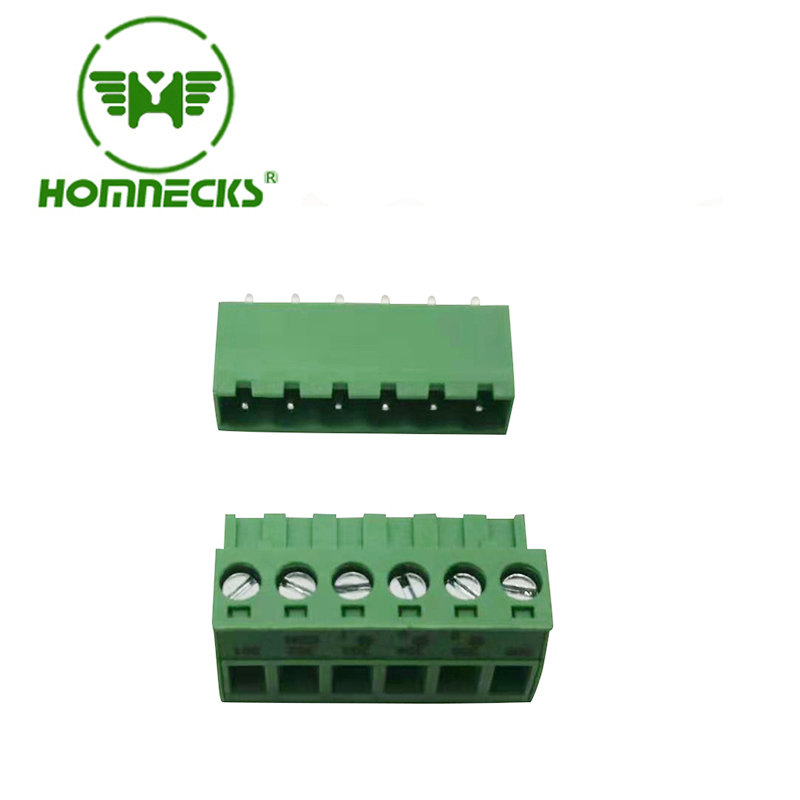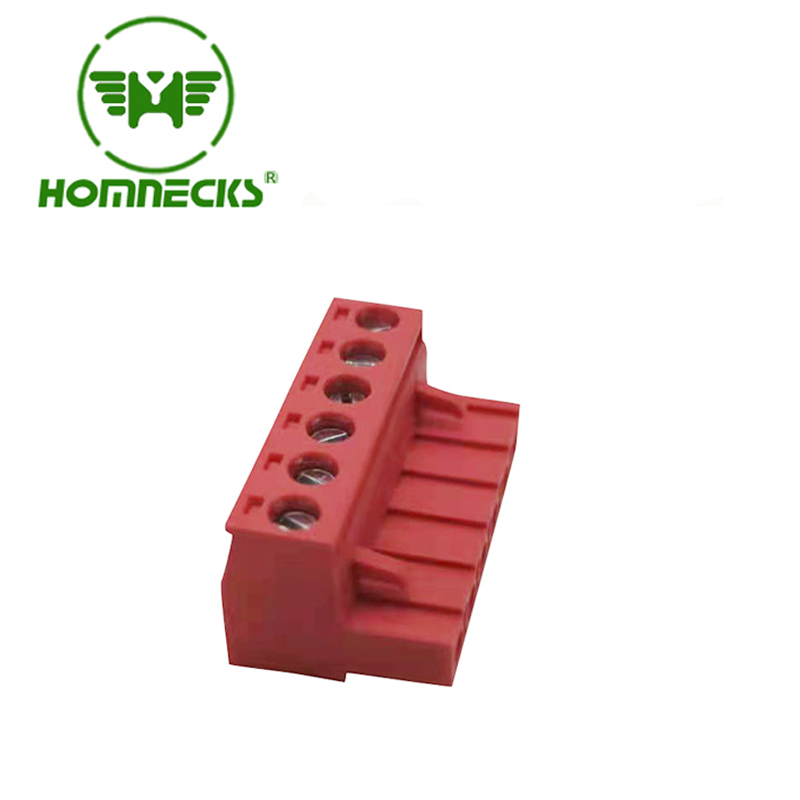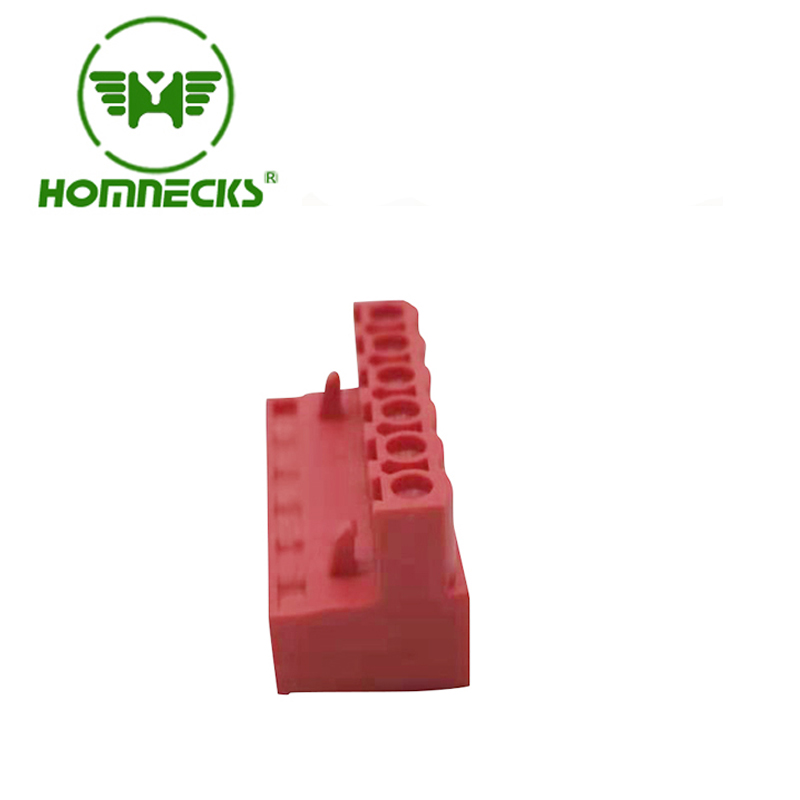In the fluid piping system, the valve is a control element, its main role is to isolate the equipment and piping system, regulate flow, prevent backflow, regulate and discharge pressure.
Valves can be used to control the flow of various types of fluids such as air, water, steam, various corrosive media, slurries, oils, liquid metals and radioactive media. Since the selection of the most suitable valve for the piping system seems to be very important, it becomes vital to understand the characteristics of the valve and the steps and basis for selecting the valve.
The classification of the valve
Valves can be divided into two main categories:
1. Automatic valves
Relying on the medium (liquid, gas) the ability to act on its own valves.
Such as check valves, safety valves, control valves, traps, pressure reducing valves.
2. Drive the valve
With manual, electric, hydraulic, pneumatic to manipulate the action of the valve.
Such as gate valves, globe valves, throttle valves, butterfly valves, ball valves, plug valves and so on.
According to the structural characteristics, according to the direction of the closing member relative to the valve seat movement can be divided into:
(1) Gate shape: the closing member moves along the center of the valve seat;
(2) Gate shape: the closing member moves along the center of the vertical valve seat;
(3) Plunger and ball: the closing member is a plunger or ball, rotating around its own centerline;
(4) Rotary opening shape: the closing member rotates around the axis outside the valve seat;
(5) Disc shape: the disc of the closing member, rotating around the axis inside the valve seat;
(6) Slide valve shape: the closing member slides in the direction perpendicular to the passage.
According to the use, according to the different uses of the valve can be divided into:
(1) Open and close with: used to connect or cut off the pipeline medium, such as globe valves, gate valves, ball valves, butterfly valves and so on.
(2) Check: used to prevent the medium backflow, such as check valves.
(3) Regulation: used to adjust the pressure and flow of the medium, such as regulating valves, pressure reducing valves.
(4) Distribution: used to change the direction of media flow, distribution of media, such as three-way plug, distribution valves, slide valves.
(5) Safety valve: in the medium pressure exceeds the specified value, used to discharge excess media, to ensure the safety of piping systems and equipment, such as safety valves, accident valves.
(6) Other special purposes: such as traps, air release valves, sewage valves, etc..
According to the drive mode, according to the different drive mode can be divided into:
(1) Manual: with the help of handwheels, handles, levers or sprockets, etc., there are manpower drive, transmission of large torque is equipped with worm gears, gears and other deceleration devices.
(2) Electric: with the help of motor or other electrical devices to drive.
(3) Hydraulic: with the help of (water, oil) to drive.
(4) Pneumatic: driven by compressed air.
According to the pressure, according to the nominal pressure of the valve can be divided into:
(1) Vacuum valves: absolute pressure <0.1Mpa that is, 760mm Hg high valves, usually mm Hg or mm water column pressure.
(2) Low-pressure valves: nominal pressure PN ≤ 1.6Mpa valves (including PN ≤ 1.6MPa steel valves)
(3) Medium pressure valve: nominal pressure PN2.5-6.4MPa valve.
(4) High-pressure valve: nominal pressure PN10.0-80.0MPa valve.
(5) Ultra-high pressure valve: nominal pressure PN ≥ 100.0MPa valve.
According to the temperature of the medium, according to the temperature of the medium when the valve works can be divided into:
(1) Ordinary valves: applicable to the medium temperature -40 ℃ ~ 425 ℃ valve.
(2) High-temperature valves: for media temperature 425 ℃ ~ 600 ℃ valve.
(3) Heat-resistant valves: for media temperature of 600 ℃ above the valve.
(4) Low-temperature valves: for media temperature -150 ℃ ~ -40 ℃ valve.
(5) Ultra-low temperature valves: for media temperature -150 ℃ below the valve.
According to the nominal diameter, according to the nominal diameter of the valve can be divided into:
(1) Small diameter valve: nominal diameter DN <40mm valve.
(2) Medium caliber valves: nominal diameter DN50 ~ 300mm valve.
(3) Large caliber valves: nominal diameter DN350 ~ 1200mm valve.
(4) Large caliber valves: nominal diameter DN ≥ 1400mm valve.
According to the way of connection with the pipeline, according to the valve and pipeline connection can be divided into:
(1) Flange connection valve: valve body with a flange, and the pipeline using flange connection valve.
(2) Threaded connection valve: valve body with internal or external threads, and the pipeline using threaded connection valve.
(3) Welded connection valve: valve body with weld, and the pipeline using welded connection valve.
(4) Hoop connection valve: the valve body with a clamp port, and the pipeline using the hoop connection valve.
(5) Ferrule connection valve: the use of ferrule and pipe connection valve.
The characteristics of the valve
Valve characteristics generally have two kinds of characteristics, the use of characteristics and structural characteristics.
1. The use of characteristics
It determines the main use of the valve performance and scope of use, belonging to the use of the valve characteristics:
-
Valve category (closed-loop valves, regulating valves, safety valves, etc.);
-
Product type (gate valve, globe valve, butterfly valve, ball valve, etc.);
-
Materials of the main parts of the valve (valve body, valve cover, valve stem, valve flap, sealing surface);
-
Valve transmission mode, etc.
2. Structural characteristics
It determines the valve installation, repair, maintenance and other methods of some structural characteristics, belonging to the structural characteristics:
-
Valve structure length and overall height, and pipeline connection form (flange connection, threaded connection, clamped hoop connection, external threaded connection, welded end connection, etc.);
-
The form of sealing surface (inlay ring, threaded ring, surfacing, spray welding, valve body body);
-
The form of valve stem structure (rotating stem, lifting stem) and so on.
The selection of the steps and basis of the valve
1. Selection steps
(1) Clearly the use of the valve in the equipment or device to determine the working conditions of the valve: applicable media, operating pressure, operating temperature, etc..
(2) Determine the nominal diameter of the pipeline connected to the valve and connection: flange, threaded, welded, etc..
(3) Determine the way to operate the valve: manual, electric, electromagnetic, pneumatic or hydraulic, electrical linkage or electro-hydraulic linkage.
(4) According to the pipeline medium, working pressure, working temperature to determine the selected valve shell and inner parts of the material: gray cast iron, malleable cast iron, ductile iron, carbon steel, alloy steel, stainless acid-resistant steel, copper alloy, etc..
(5) Select the type of valve: closed-circuit valves, regulating valves, safety valves and so on.
(6) Determine the type of valve: gate valves, globe valves, ball valves, butterfly valves, throttle valves, safety valves, pressure reducing valves, steam traps, etc.
(7) Determine the parameters of the valve: for automatic valves, according to the different needs of the first to determine the allowable flow resistance, discharge capacity, back pressure, etc., and then determine the nominal diameter of the pipeline and the diameter of the valve seat hole.
(8) Determine the geometric parameters of the selected valve: structural length, flange connection form and size, open and close the valve after the height direction of the size, the size and number of bolt holes to connect, the entire valve dimensions, etc..
(9) The use of existing information: valve catalogs, valve product samples, etc. to select the appropriate valve products.
2. The basis for selecting the valve
In understanding the steps to master the selection of valves at the same time, should further understand the basis for selecting the valve.
(1) The purpose of the selected valve, the use of working conditions and manipulation control.
(2) The nature of the working medium: working pressure, working temperature, corrosive properties, whether it contains solid particles, whether the medium is toxic, whether it is flammable, explosive media, the viscosity of the medium and so on.
(3) The requirements of the valve fluid characteristics: flow resistance, discharge capacity, flow characteristics, sealing grade and so on.
(4) Installation size and size requirements: nominal diameter, connection with the pipeline and connection size, dimensions or weight limitations.
(5) Of the valve product reliability, service life and explosion-proof performance of electric devices and other additional requirements.
Attention should be paid when selecting parameters:
If the valve is to be used for control purposes, the following additional parameters must be determined: method of operation, the maximum and minimum flow requirements, the pressure drop in normal flow, the pressure drop when closed, the maximum and minimum inlet pressure of the valve.
According to the above selection of valves based on the basis and steps, reasonable and correct selection of valves must also be a detailed understanding of the internal structure of various types of valves, in order to be able to prioritize the selection of valves to make the right choice.
The final control of the pipeline is the valve. Valve opening and closing parts of the control of the medium in the pipeline beam way, the shape of the valve flow path so that the valve has a certain flow characteristics, in the selection of piping system is most suitable for the installation of the valve must take this into account.
Selection of valves should follow the principles:
(1) Shut-off and open medium with the valve
Flow path for the straight-through valve, its flow resistance is small, usually selected as a cut-off and open medium with the valve. Downward closing type valve (globe valve, plunger valve) due to its flow path zigzag, flow resistance is higher than other valves, so less selection. Allow a higher flow resistance of the occasion, you can choose to close the valve.
(2) Valves for flow control
Usually choose the valve that is easy to adjust the flow rate as the control flow rate. Downward closing type valves (such as globe valves) is suitable for this purpose, because its seat size is proportional to the stroke between the closing member. Rotary valves (plug valves, butterfly valves, ball valves) and flexure body type valves (clamp valves, diaphragm valves) can also be used for throttling control, but are usually only applicable within a limited range of valve sizes. Gate valve is a disc-shaped gate on the circular valve seat mouth to do cross-cutting movement, it is only close to the closing position, can better control the flow, so usually not used for flow control.
(3) Reversing and diverting valves
According to the need for commutation and diversion, this valve can have three or more channels. Plug valves and ball valves are more suitable for this purpose, therefore, most of the valves used for commutation of flow diversion are selected one of these valves. But in some cases, other types of valves, as long as the two or more valves properly connected to each other, can also be used for reversing the flow.
(4) Valves for media with suspended particles
When the medium with suspended particles, the most suitable for the use of its closure along the sealing surface of the sliding with the wiping effect of the valve. If the closing member of the seat of the back and forth movement is vertical, then it may be entrapped particles, so this valve unless the sealing surface material can allow embedded particles, otherwise only suitable for basic clean media. Ball valves and plug valves in the opening and closing process of the sealing surface are wiping effect, so it is suitable for use in the medium with suspended particles.
The valve selection instructions
1. Gate valve selection
In general, the gate valve should be preferred. In addition to the gate valve for steam, oil and other media, but also for the media containing granular solids and viscosity, and for the venting and low vacuum system valves. For media with solid particles, the gate valve body should be with one or two blow holes. For low-temperature media, should be used for low-temperature special gate valve.
2. Globe valve selection instructions
Globe valve is suitable for the fluid resistance requirements are not strict pipeline, that is, the pressure loss is not a big consideration, as well as high temperature, high pressure media pipeline or device, suitable for DN <200mm steam and other media pipeline; small valves can be used to select the globe valve, such as needle valves, instrumentation valves, sampling valves, manometer valves, etc.; Globe valve flow regulation or pressure adjustment, but the regulation of the accuracy of the requirements of the high, and the diameter of the pipeline and Comparison of hours, it is appropriate to use the globe valve or throttle valve; for highly toxic media, it is appropriate to use the bellows sealed globe valve; but the globe valve should not be used for viscosity of the medium and contain particles easy to precipitate the medium, but also should not be used as a bleeder valve and the valve of the low-vacuum system.
3. Ball valve selection instructions
Ball valves are suitable for low temperature, high pressure, viscosity of the medium. Most ball valves can be used in the medium with suspended solid particles, according to the material requirements of the seal can also be used for powdery and granular media; full-channel ball valves are not suitable for flow regulation, but suitable for the requirements of rapid opening and closing occasions, to facilitate the realization of the accident emergency cut off; usually in the sealing performance is strict, wear and tear, indentation of the channel, open and close quickly, high-pressure cut-off (differential pressure is large), low-noise, cavitation phenomenon, the operating torque is small, the fluid resistance. Torque is small, small fluid resistance in the pipeline, the recommended use of ball valves; ball valves are suitable for lightweight structure, low-pressure cut-off, corrosive media; ball valves or low-temperature, deep-cold media, the most ideal valve, low-temperature media piping systems and devices, it is appropriate to choose to add the bonnet of the low-temperature ball valves; selection of floating ball ball valves when the seat material should undertake the ball and the working medium of the load, the large-diameter ball valves need to be larger when operating Force, DN ≥ 200mm ball valve should be selected worm gear drive form; fixed ball valve for larger caliber and higher pressure occasions; in addition, for the process of highly toxic materials, combustible media pipeline ball valve, should have a fire prevention, anti-static structure.
4. Throttle valve selection instructions
Throttle valve is suitable for medium temperature is low, high pressure occasions, suitable for the need to regulate the flow and pressure of the parts, does not apply to viscosity and contain solid particles of the medium, should not be used as a partition valve.
5. Plug valve selection instructions
Plug valves are suitable for occasions requiring rapid opening and closing, generally not applicable to steam and higher temperature media, for lower temperature, viscosity of the media, but also applicable to the media with suspended particles.
6. Butterfly valve selection instructions
Butterfly valve is suitable for larger caliber (such as DN>600mm) and short structure length requirements, as well as the need for flow regulation and opening and closing requirements for rapid occasions, generally used for temperature ≤ 80 ℃, pressure ≤ 1.0MPa water, oil and compressed air and other media; due to the butterfly valve relative to the gate valve, the ball valve pressure loss is relatively large, the butterfly valve is suitable for pressure loss requirements are not stringent piping system.
7. Check valve selection instructions
Check valve is generally applicable to clean media, should not be used for solid particles and viscosity of the medium.
-
When DN ≤ 40mm, it is appropriate to use lift check valve (only allowed to be installed in the horizontal pipeline);
-
When DN = 50 ~ 400mm, it is appropriate to use the rotary lift check valve (in the horizontal and vertical pipeline can be installed, such as installation in the vertical pipeline, the media flow direction should be from the bottom up);
-
When DN ≥ 450mm, it is appropriate to use buffer type check valve;
-
When DN = 100 ~ 400mm can also choose to use the clamp type check valve;
Swing check valve can be made into a very high working pressure, PN can reach 42MPa, according to the shell and sealing material can be applied to any working medium and any working temperature range. The medium is water, steam, gas, corrosive media, oil, pharmaceuticals and so on. Medium working temperature range between -196 ~ 800 ℃.
8. Diaphragm valve selection instructions
Diaphragm valve is suitable for working temperature less than 200 ℃, pressure less than 1.0MPa oil, water, acidic media and media containing suspended solids, not for organic solvents and strong oxidizing agents media; abrasive particulate media should be selected weir diaphragm valve, weir diaphragm valve to refer to the flow characteristics of the table; viscous fluids, cement slurry, and precipitation media should be selected through the type of diaphragm valve; in addition to the specific requirements, diaphragm valve Should not be used for vacuum piping and vacuum equipment.
Valve applications, frequency of operation and service varies greatly, to control or eliminate even the slightest leakage, the most important, the most critical equipment is still the valve. Learning the proper selection of valves is critical.









